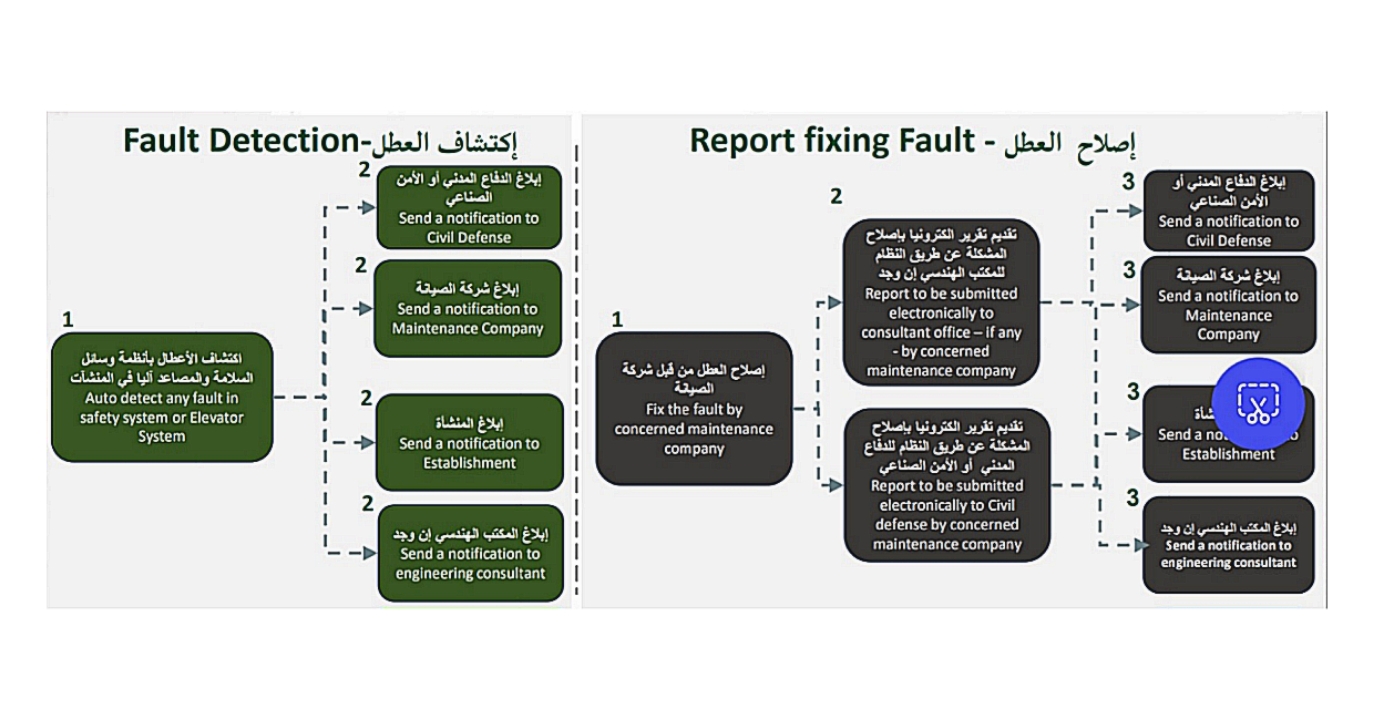Detect and Report Malfunctions
Detect and Report Malfunctions in Intelligent Safety Systems (ISS)
Providing an integrated smart electronic platform that detects and identifies malfunctions by reporting them to the concerned parties connected to the platform (the maintenance department of the service facility, the responsible maintenance company contracted by the service facility, civil defense, industrial security, the engineering consulting company for public safety systems) with Opening a transaction number for each malfunction separately within the platform.
Understanding the a Detect and Report Malfunctions in Intelligent Safety Systems (ISS)
Detecting and reporting malfunctions in ISS refers to the systematic process of identifying, diagnosing, and communicating issues within safety systems using advanced technology and automated tools. Key components and features include:
- Centralized Monitoring Platform: A unified interface that provides real-time visibility into the status and performance of various safety systems, such as fire alarms, security cameras, and access control systems.
- Automated Fault Detection: Advanced algorithms and sensors that continuously monitor system performance to detect anomalies, malfunctions, or deviations from normal operation.
- Real-Time Alerts and Notifications: Immediate communication of detected malfunctions through alerts, notifications, or alarms to relevant personnel or systems for prompt action.
- Diagnostic Tools: Automated diagnostic tools that analyze the nature and cause of detected faults, providing detailed information and recommendations for resolution.
- Data Logging and Reporting: Recording and analyzing data on system performance and malfunctions to generate reports, track trends, and support ongoing maintenance and improvement efforts.
Why Choose a Detect and Report Malfunctions in Intelligent Safety Systems (ISS)?
- Enhanced System Reliability: Proactive detection and reporting of malfunctions ensure that safety systems remain operational and effective, reducing the risk of system failures and enhancing overall safety.
- Swift Response and Resolution: Immediate alerts and automated diagnostics enable rapid identification and resolution of issues, minimizing downtime and preventing potential safety hazards.
- Improved Maintenance: Access to detailed diagnostic information and historical data supports informed maintenance decisions, optimizing resource allocation and extending system lifespan.
- Compliance and Safety: Ensuring that safety systems are functioning correctly and addressing any malfunctions promptly helps maintain compliance with safety regulations and standards.
- Reduced Risk and Liability: Timely detection and reporting of malfunctions mitigate the risk of accidents, security breaches, or emergencies, reducing potential liability and enhancing protection for occupants and property.
- Data-Driven Insights: Analyzing data on system performance and faults provides valuable insights for improving safety protocols, identifying recurring issues, and making strategic upgrades.




